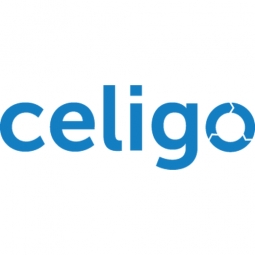Technology Category
- Application Infrastructure & Middleware - Data Exchange & Integration
- Application Infrastructure & Middleware - Middleware, SDKs & Libraries
Applicable Industries
- Chemicals
- E-Commerce
Applicable Functions
- Sales & Marketing
- Warehouse & Inventory Management
Use Cases
- Demand Planning & Forecasting
- Inventory Management
Services
- System Integration
About The Customer
SAFIO Solutions is a SaaS vendor for ecommerce and supply chain, headquartered in Brookfield, Wisconsin. The company provides a cloud-based, forecasting software solution for inventory optimization. The software was created nearly twenty years ago by founder Audrey Walby, who saw a need for an accurate, efficient, comprehensive tool for making the forecasting process more effective. The software connects all channels of data and integrates a client's vital sales and inventory information into a platform that enables strategic decision-making for inventory optimization and overall company performance improvement.
The Challenge
SAFIO Solutions, a SaaS vendor for ecommerce and supply chain, faced a significant challenge in integrating multiple channels of data from various sources into their solution. The data could come from clients' ERP, Excel files, QuickBooks, e-commerce marketplaces like Shopify, Amazon, and more. The integration process was mission-critical to SAFIO Solutions and their customers, but the options were limited, time-consuming, and sometimes required manual processes. The company initially partnered with an integration provider who fell short of their needs. They needed a replacement that would improve customer experience, be cost-competitive, decrease time to revenue, and help expand the SAFIO Solutions business. The challenge was further complicated by the fact that their clients operated using a variety of apps, channels, and ERP systems, each with different integration requirements.
The Solution
SAFIO Solutions found their solution in Celigo, a versatile integration platform. The company's Chief Technology Officer, David Zey, considered several key elements when choosing a solution: good integration, support, cost-effectiveness, and the ability to solve future problems. Celigo met all these requirements, offering a pricing model based on actual integration points, not on usage or bandwidth by their client. This model was a major draw as it meant no limitation on flows. Once the SAFIO Solutions team learned how to use Celigo, they were able to speed up implementations, running multiple projects with fewer resources simultaneously. The flexibility of the solution made it easier to think through different approaches to solve their customer’s needs. Celigo also retained the original data in case of failures, allowing for reprocessing and a cleaner operational workflow.
Operational Impact
Quantitative Benefit

Case Study missing?
Start adding your own!
Register with your work email and create a new case study profile for your business.
Related Case Studies.

Case Study
Honeywell - Tata Chemicals Improves Data Accessibility with OneWireless
Tata was facing data accessibility challenges in the cement plant control room tapping signals from remote process control areas and other distant locations, including the gas scrubber. Tata needed a wireless solution to extend its control network securely to remote locations that would also provide seamless communication with existing control applications.

Case Study
Advanced Elastomer Systems Upgrades Production
In order to maintain its share of the international market for thermoplastic elastomers AES recently expanded its Florida plant by adding a new production line. While the existing lines were operating satisfactorily using a PROVOX distributed control system with traditional analog I/O, AES wanted advanced technology on the new line for greater economy, efficiency, and reliability. AES officials were anxious to get this line into production to meet incoming orders, but two hurricanes slowed construction.
Case Study
Wireless GPS Tracking & Security Monitoring
Enhancing the security of hazardous freight and ensuring compliance with Homeland Security’s Transportation Security Administration mandate that all trains carrying chemicals capable of creating a toxic inhalation condition are equipped with on-board safety monitoring systems.

Case Study
Field Device Asset Management For Chemical Company in China
Chinese chemical subsidiary of multinational corporation serves customers throughout the world. Sales offices and research and technology centers are strategically located to provide rapid response to customer requests. Just two workers were assigned to maintain thousands of intelligent instruments in three production units, so they could do little more than react to device issues as they appeared. This costly maintenance method inevitably led to unexpected downtime when a critical instrument failed. Plant management recognized the need to change from reactive to predictive maintenance for all assets, including instruments and control valves, but help was needed in implementing such a technology-based initiative.

Case Study
Industrial Workforce Mobility for Improved Safety & Operations
Huntsman Corporation, a global manufacturer and marketer of differentiated chemicals, undertook an aggressive program to eliminate injuries, product defects, and environmental releases at their Port Neches facility. Termed “Project Zero”, this program required a completely mobile solution to empower operations and maintenance personnel to capture defects, track work progress and make process and safety related decisions in real-time.




